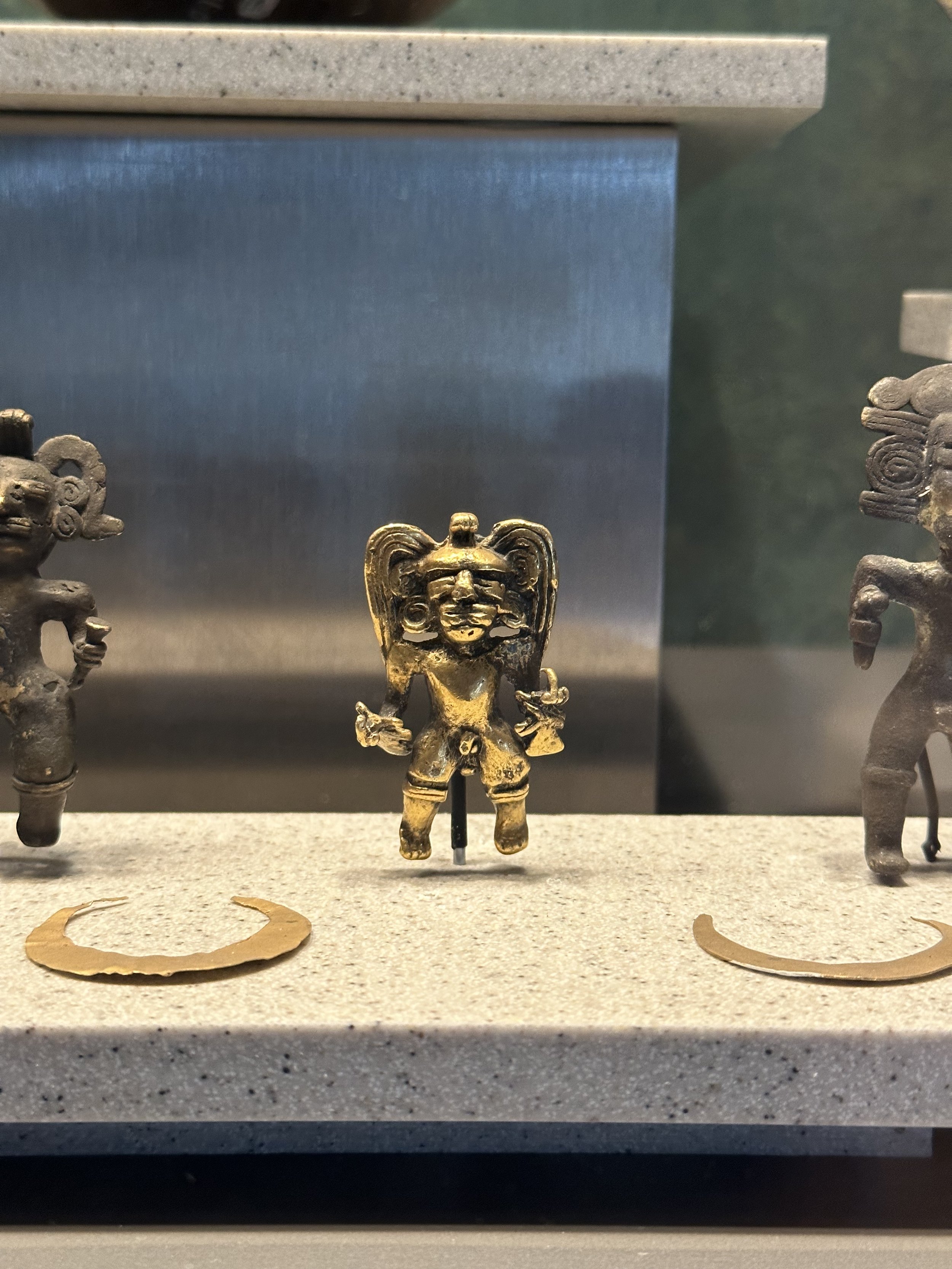CDMX (aka Mexico City)
With a bit of extra time in Mexico, we decided to take a trip to the big city, Mexico City aka CDMX for Ciudad de México. It felt a world away from the Baja and showed us even more of this fascinating and beautiful country.
It will not come as a surprise to anyone who has visited or lives in Mexico City that this large metropolis is awesome. It’s a big city filled with museums, trees, parks, restaurants, and people from all walks of life. I’m almost embarrassed to admit how far off my expectations were – I was excited to come but had no idea how much we would find.
Hanging out at the letters in Bosque de Chapultepec
It’s a big place – 9 million people in the city and almost 22 million in the greater area. The guides all do a good job of describing the districts and the zones. We just scratched the surface and found many distinct neighborhoods. Big avenues and tiny streets. Food stalls and street vendors on every conceivable inch. Popup markets. Large bookstores. Airy courtyards. If it sounds fantastical, that’s close to how we felt.
I expected it to be hot in July, but I was just wrong. Perhaps I had Baja on the brain where it is beyond hot in July, but in CDMX, the highs were in the high 70s / low 80s with lows in the low 60s and upper 50s. The climate was delightful. It rained every afternoon, but this was a special treat for us as we hadn’t seen rain in over 8 months.
Public transit is great – fast and cheap. We got a card that enabled tap-to-pay for each bus or subway ride. It got us where we needed to be each and every time. As an aside, Citymapper is an incredible app for navigating cities. You put in a start and destination and then it provides all the various ways you can get there, from buses, to walking, to walking-bus-metro-walking, to uber, to didi. Seriously, it makes cities far more approachable and fun to explore on foot.
No trip to Mexico City should be completed without a handful of museums being visited. And we visited a good handful. The National Museum of Anthropology (aka Museo Nacional de Antropología or MNA) is a must. It’s in a beautiful park setting and has an astonishing collection. It tells of the rich pre-Hispanic history of this land. These were astonishing large and complex cultures, with sophisticated societies, agriculture, and artistry. The existed for 1000s of years before the arrival of Europeans and were decimated upon their arrival. Mexico City itself is built upon the seat of the Aztec empire.
My understanding of pre-Hispanic history was limited before our time in Mexico. I had learned some about the Mayans and the Aztecs, but I had not appreciated the depth of their cultures. Luke and I studied the Aztecs in some depth during history this year, so it was thrilling to see so many of the things we had read about.
The world’s collective understanding has increased dramatically in the past 40 years as archeologists have spent time uncovering sites and studying how these cultures worked. They had hyper accurate calendars. Pyramids the size of those in Giza. Super productive agricultural systems. Complex theology. The list goes on and it’s worth taking a moment to think about what we all lost after disease and armed conflict decimated these cultures. How would the world look today if contact with Spain had not been so destructive?
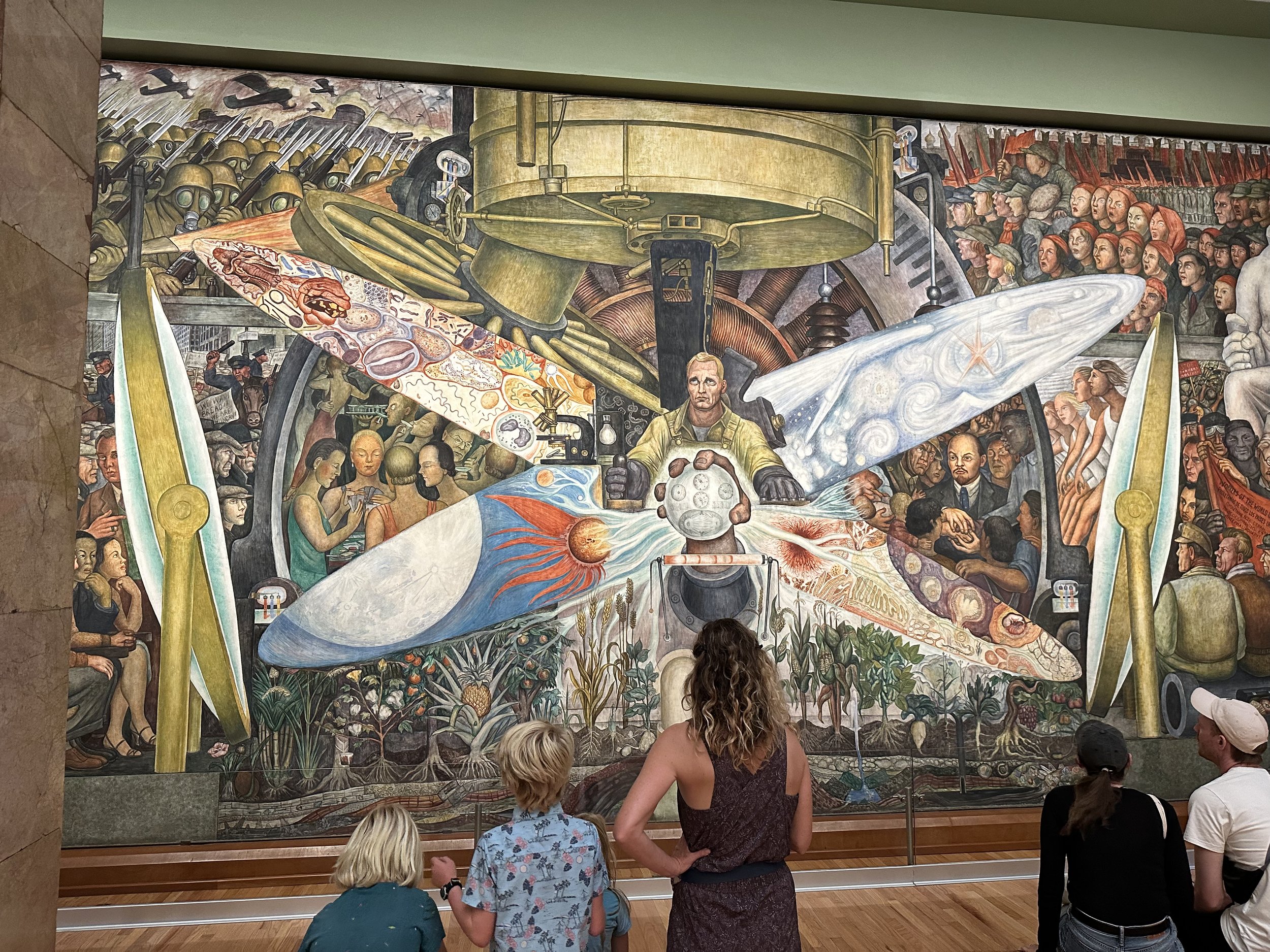
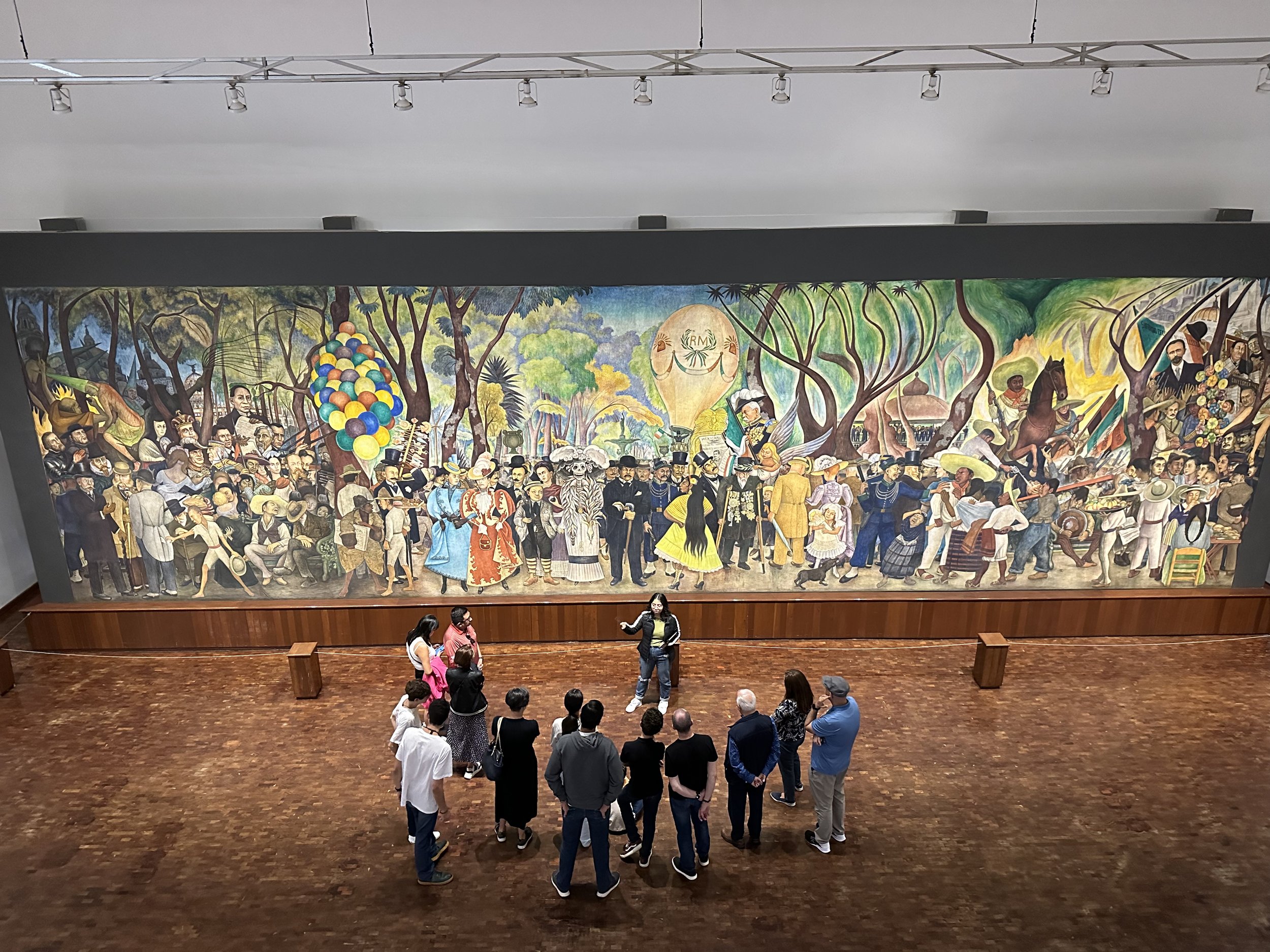
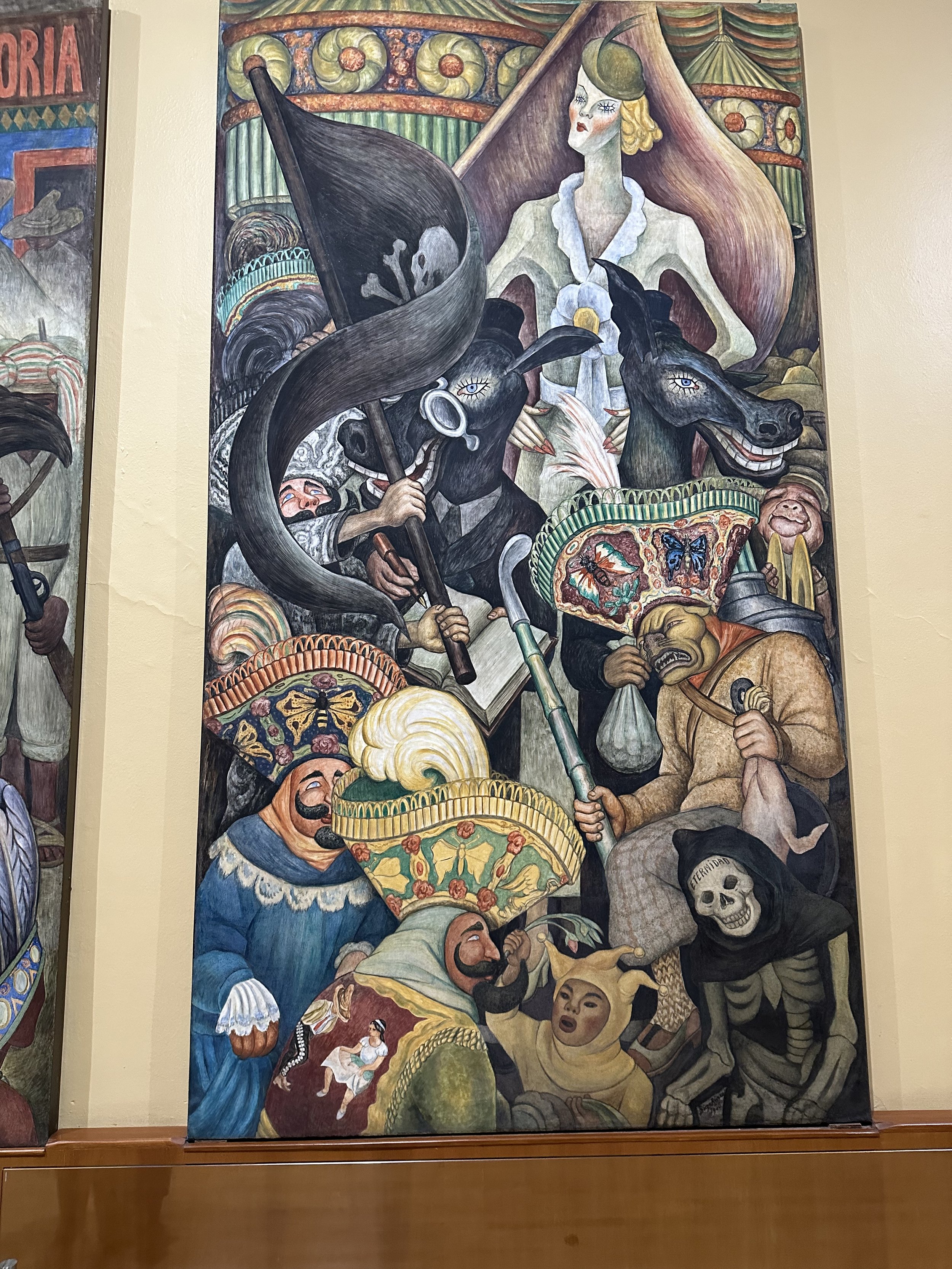
After immersing ourselves in the time before 1500, we jumped forward to the art of the 1900s. In the early 1900s, a group of Mexican artists created incredible murals, at first sponsored by the post-revolution government that wanted to tell the history of the country to everyone, including those who could not read. Some tell the story of Mexico while others are commentary on society and culture at the time. The murals are huge and their size and complexity make them worthy of spending lots of time looking at. We saw just some of them – and enjoyed the Museo Mural Diego Rivera, Palacio de Bellas Artes, and the Palacio Nacional.
Diego Rivera’s Man at the Center of the Universe was commissioned for Rockefeller Center in New York City. However, after seeing the final work, it was deemed too divisive with “anti-capitalist” themes. It was destroyed and he re-painted it in Mexico City. Regardless of your point of view on various forms of government, it is fascinating to sit and ponder the forces shaping society at this time.
We also managed to snag a tour of Diego Rivera’s murals in the Palacio Nacional (or National Palace). They were spectacular and our tour guide had a depth of knowledge that made viewing them all the richer. It is a bit of a gamble to get in, no advanced reservations are possible, but it was so worth it. Also, do not confuse this with the National Museum of World Cultures, which is next door, but entirely separate and does not have access to the murals.
The President of Mexico currently lives and works in the National Palace and the murals are located right next to his office, hence the security. The tour starts with one very large mural that tells the history of Mexico from the pre-Hispanic times up to the early 1900s and then a series of murals that go deep into the pre-Hispanic peoples. The paintings are beautiful and also fantastic history lessons in how these societies worked.
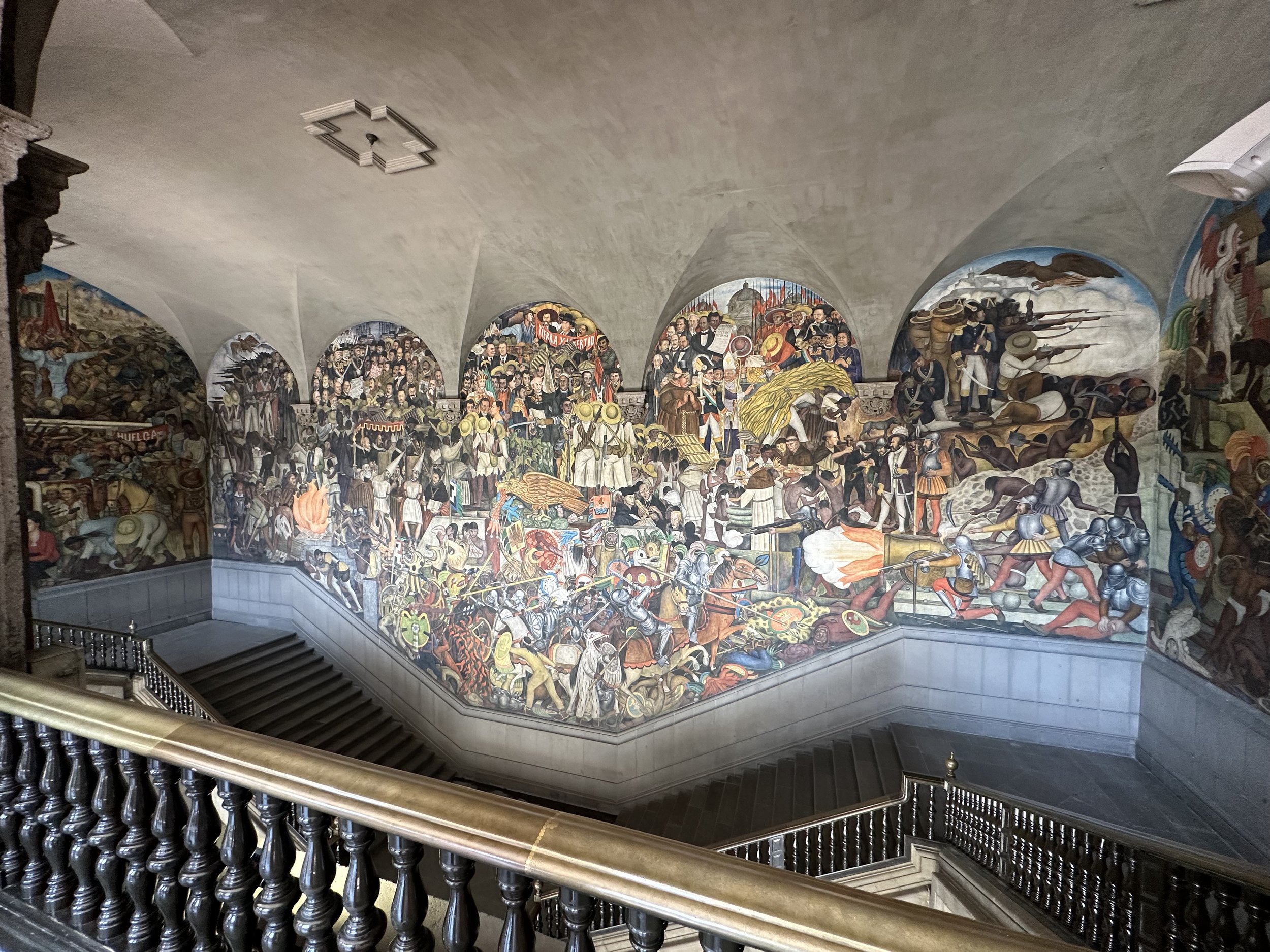
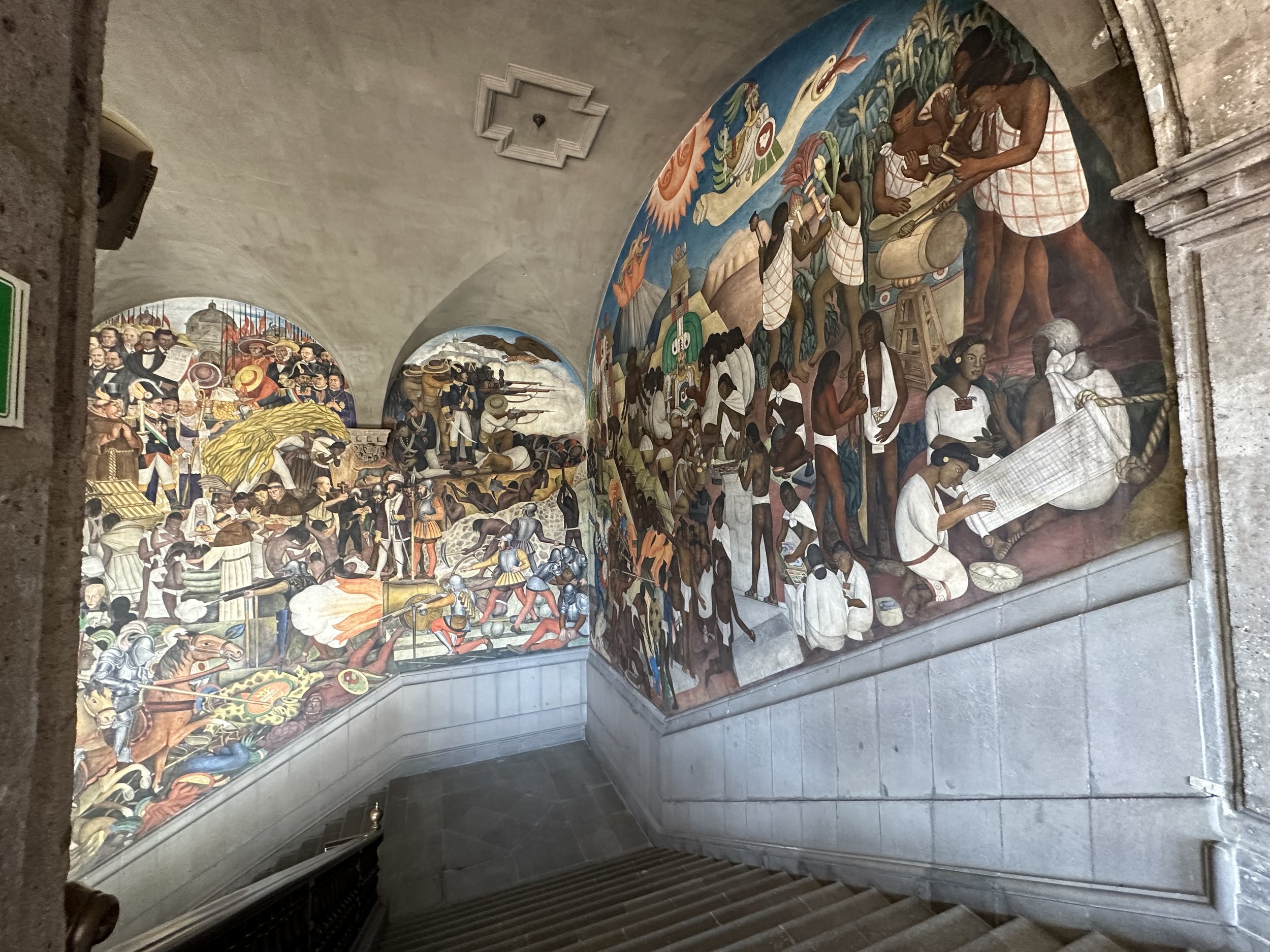
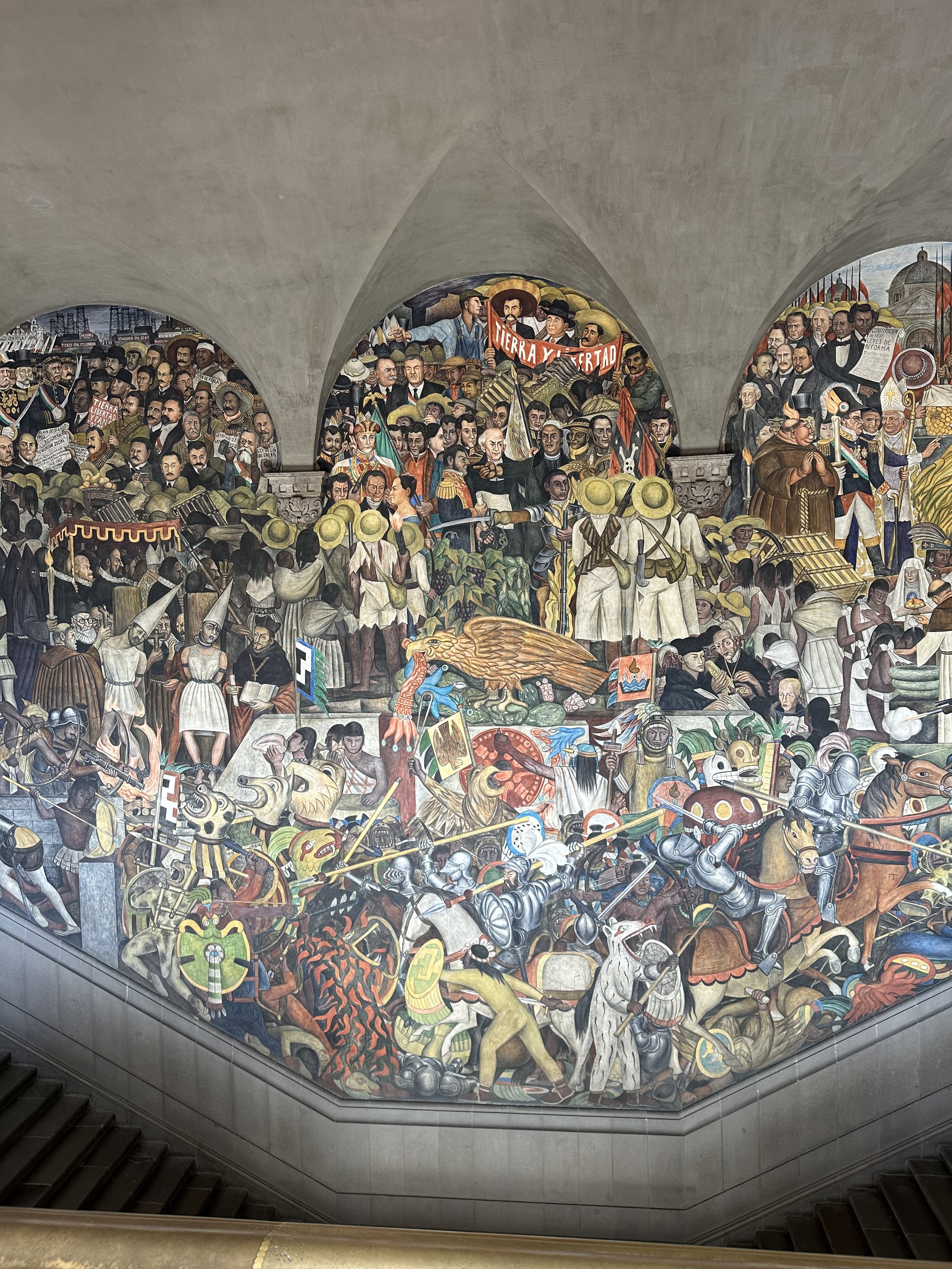
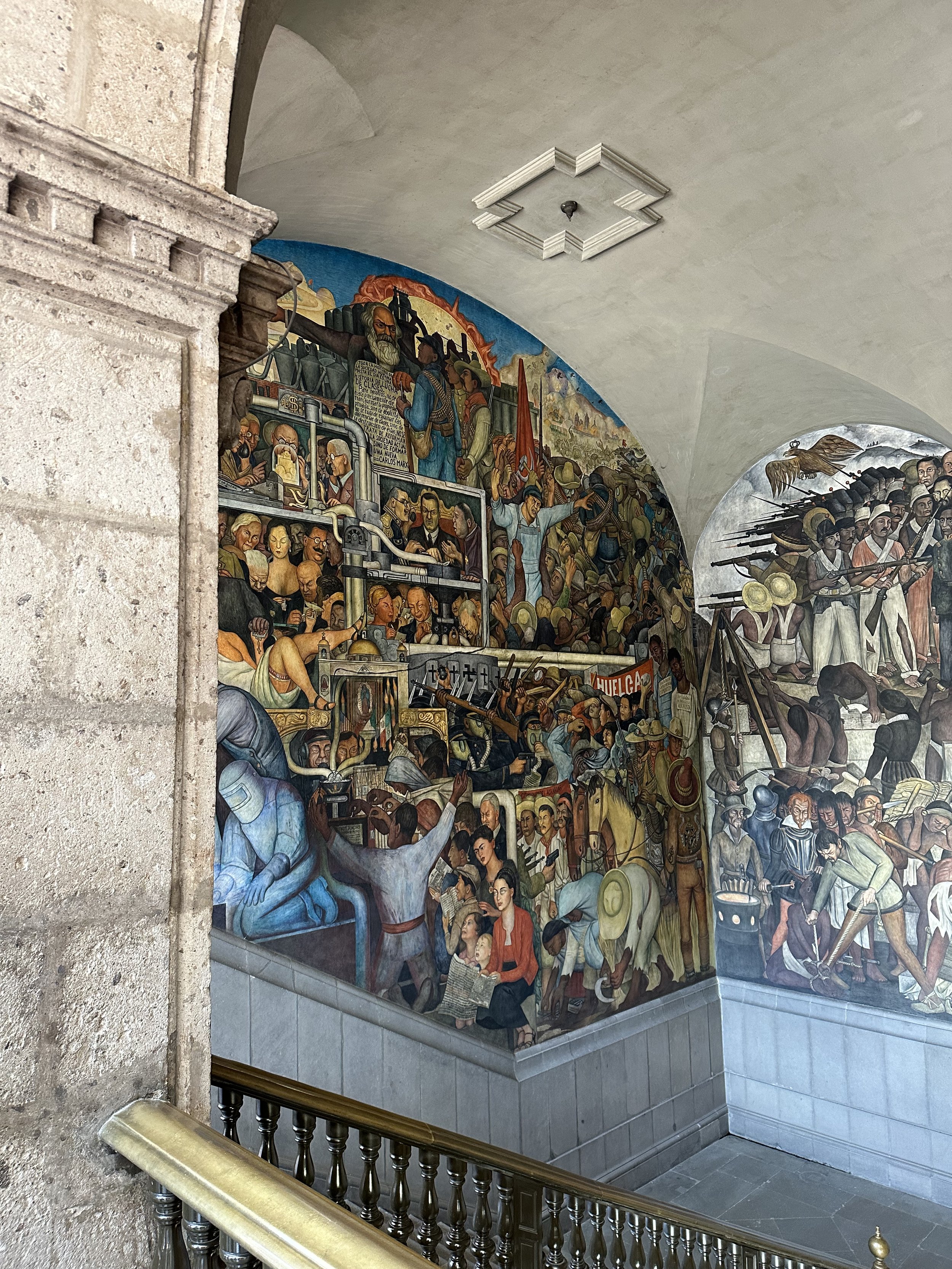
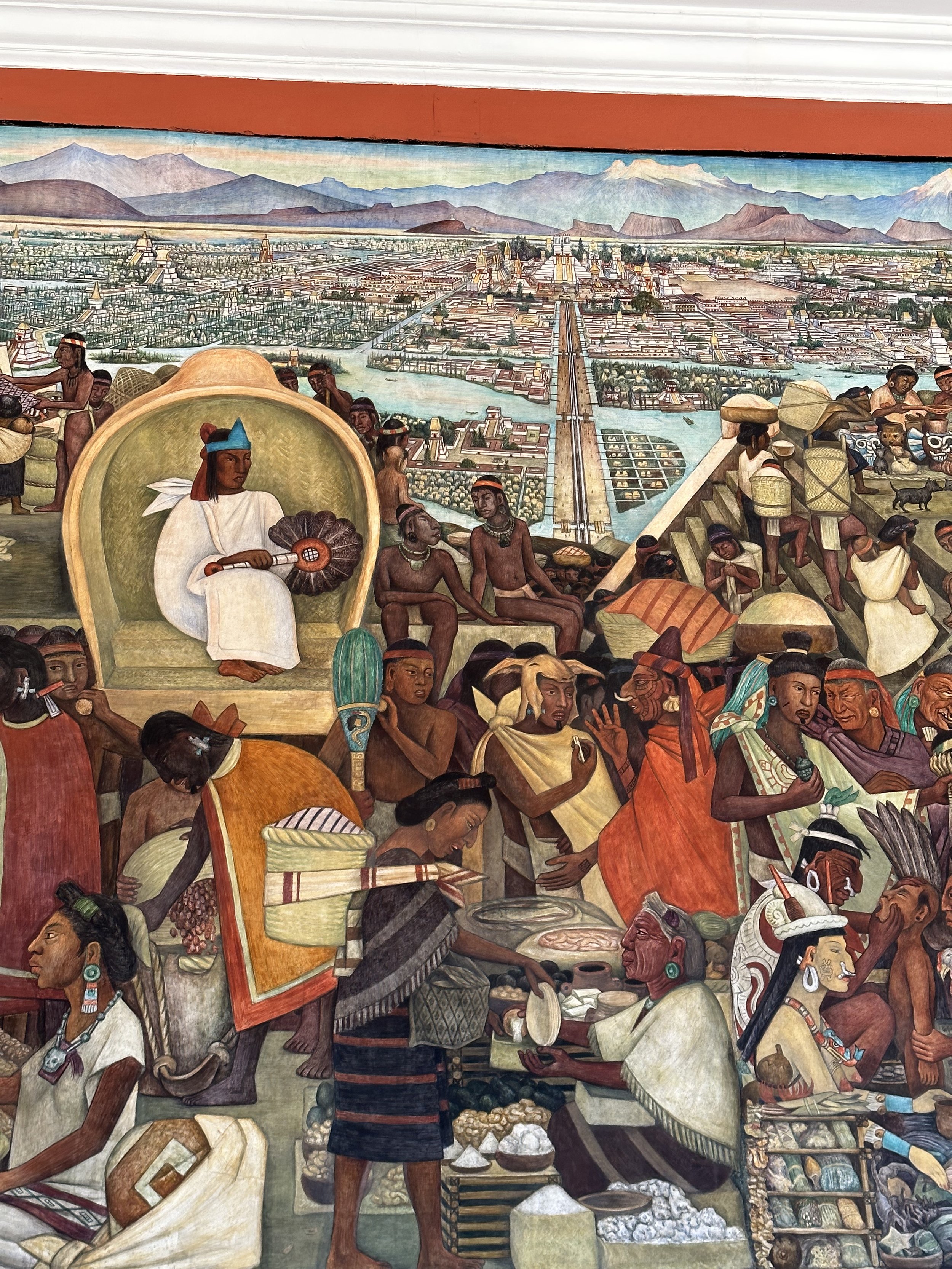

While in the city, we couldn’t miss the Luchadores in a Lucha Libre contest. We went to the Sunday night match at Arena México. It was everything you could want out of professional wrestling – from the masks to the theatrics to the gymnastics. It was a rowdy crowd, but great fun.
We did more – including a day trip to Teotihuacan – but the purpose of this is not to replicate what a tour book does better. Mexico City has so much to offer and we realize now, even after spending 8 months or so in Mexico, we are still just scratching the surface of this rich and complex country. If you ever have a chance, put a visit to Mexico City on your list. If you love big cities, this one has a lot to offer.











